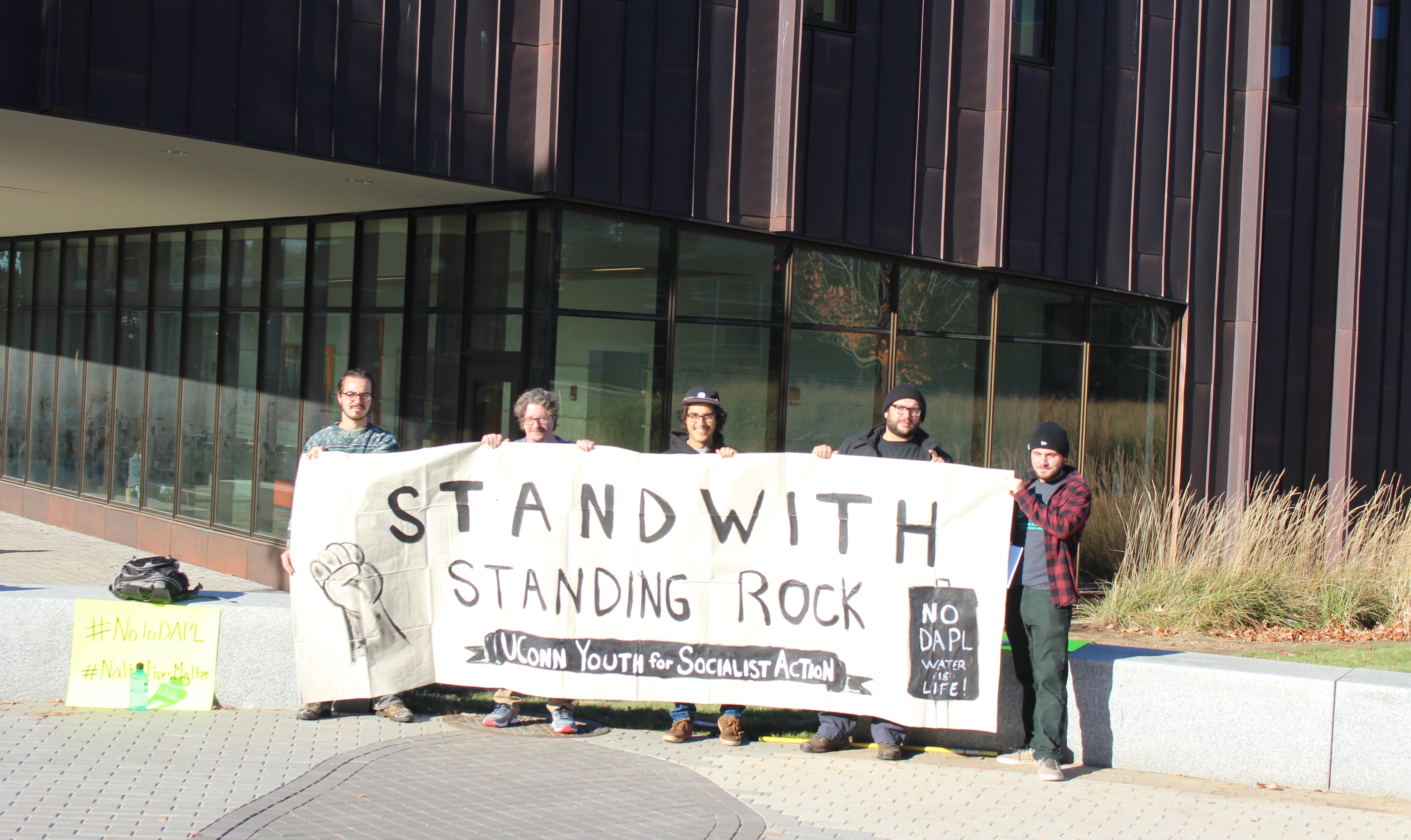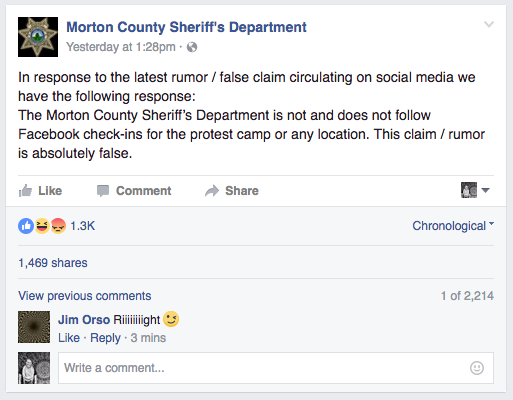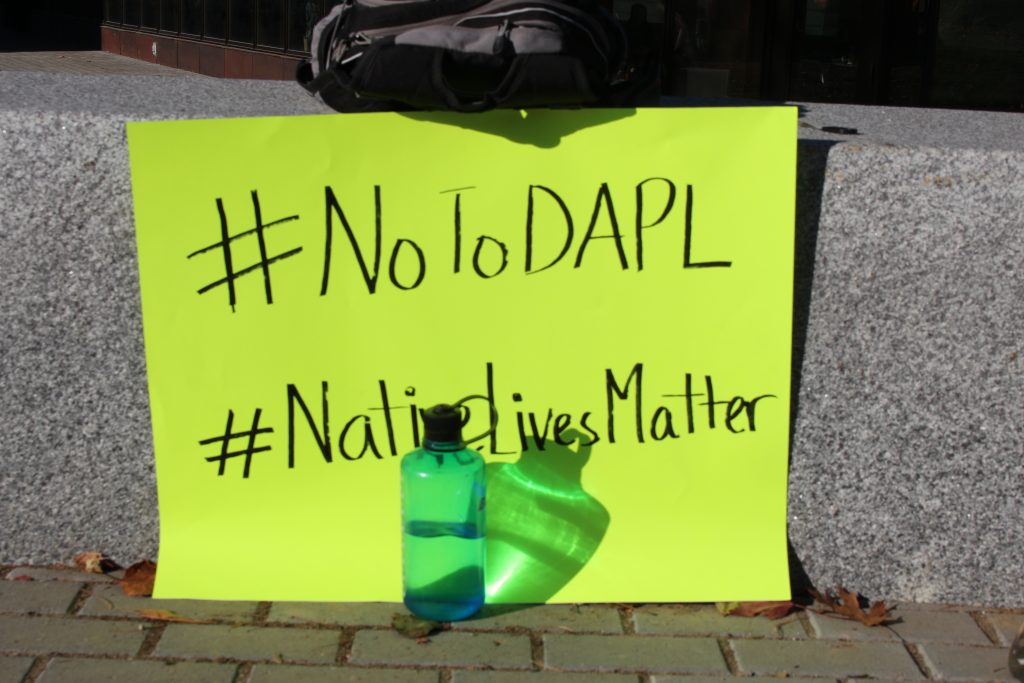UConn students stood in solidarity with the protestors at Standing Rock Indian Reservation on Tuesday afternoon, calling for construction on the Dakota Access Pipeline to be stopped.
The pipeline most recently captured public attention after a Facebook post asking users to check into the reservation went viral. The post claimed that the Morton County Sheriff’s Office was using location on Facebook to arrest protesters. The Sheriff’s Office denied the claim on Monday.
Senior physics student Evan Fritz said that the Dakota Access Pipeline is intended to bring 470,000 barrels of crude oil per day from the Bakken and Three Forks shale formations in North Dakota to Illinois. The project will require approximately 1,172 miles of pipeline through North Dakota, South Dakota, Iowa and Illinois.
Dakota Access, LLC is a company of Energy Transfers, according to the Energy Transfers website. Dakota Access received permit approval for the pipeline from the North Dakota Public Service Commission in January 2016. The project was expected to be finished by the end of 2016.
Sacred Stone Camp was established in April 2016 in an effort to protect Native land and water, as well as sacred sites at the confluence of the Cannon Ball and Missouri Rivers. While work was temporarily paused, a federal appeals court ruling on October 9th allowed construction to continue on privately owned land.
Chris Hutchinson, from the environmental group 350 Connecticut, said that it’s important to remember that there are pipelines in Connecticut as well. He said that there are proposals for new and expanded pipelines in Hartford, Rocky Hill, Cromwell, Suffield, East Granby, and Hebron, among others.
While checking in on Facebook may not do much, Hutchinson said it does recognize the issue and show support for Native peoples.
Kevin Yessian, also from 350 Connecticut, offered more about the risks of fracking. Fracking involves drilling wells, and then injecting a high pressure water mixture into the rock. The water, which has added chemicals, such as volatile organic compounds (VOCs), allows gas trapped inside the rock to be collected.
Yessian said that fracking contaminates thousands of gallons of water per well, saying that the water contaminated with VOCs is “basically irradiated”. He added that the gas that’s being fracked is methane, which is 25 times more potent than CO2 as a greenhouse gas.
Supporters of fracking and the pipeline say that it encourages energy independence and creates jobs. Hutchinson said that jobs in fossil fuel construction are short term and temporary, while 100% renewable energy like solar and wind include good paying jobs that last.
“Why invest so much money in a dangerous and toxic process rather than 100% renewable?” he asked.
350 Connecticut will host a March for Jobs, Justice and a Livable Earth on December 3rd at the Hartford Capitol at noon.





